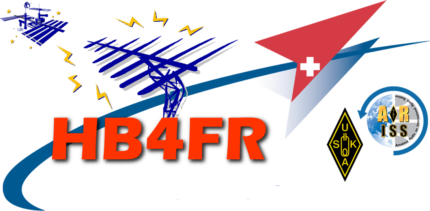Operation « HB1BCG»
Find out more about the first transatlantic shortwave message.
Friedrich, HB9TNA, provides us with the results of his research on this first shortwave message that found its way across the Atlantic.
---------------------------------------------------------------------------
On the night of December 11-12, 1921, American and British radio amateurs made radio history. For the first time, a complete message transmitted from the 1BCG radio station in Greenwich, Connecticut, had crossed the Atlantic Ocean on shortwave and was received in Ardrossan, Scotland. This success occurred as part of the 2nd Transatlantic Test, which the ARRL had organized.
At that time, short waves were considered by experts to be useless for covering long distances, so the shortwave spectrum was assigned to radio amateurs without further ado. The aim of the Atlantic tests was to prove to the experts that it was possible to cover greater distances with short waves using the appropriate technologies.
The crossing of the Atlantic Ocean with amateur shortwave signals was an epochmaking feat and led to a better understanding of propagation conditions and an unimagined development of private, civil and military radio communications.
In honor of these enthusiastic pioneers of the short waves, their sense of adventure, perseverance and sacrifice, the « HB4FR "Clin d'Ailes" Swiss Air Force Museum HAM Radio Club » was present during the period from December 1 to 31, 2021 on all amateur bands open at the time and at various times with the
special callsign HB1BCG.
---------------------------------------------------------------------------
It is fair to say that the days of modern radio communications began with the first successful transatlantic transmission of a message on shortwave frequencies on the night of December 11th to December 12th, 1921.
The callsign of the station in Greenwich (Connecticut USA) was then 1BCG.
In order to honor this important page in the history of shortwave radio, we applied to OFCOM Switzerland for the callsign HB1BCG. Special thanks go to OFCOM for the temporary authorization.
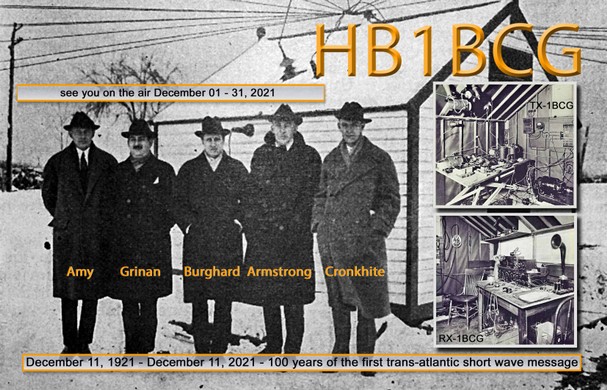
Friedrich Friedli, HB9TNA, honorary member, treasurer and editor of our QUA-Bulletin, was interested in learning more about the achievements of the pioneers of this first transatlantic shortwave message.
Here is the result, published in our QUA-Bulletin:

On the night of 11./12. December 1921 the signal of the amateur station 1BCG in Greenwich, Connecticut (USA), in Ardrossan, Scotland, made radio history as the first successful transatlantic radio transmission of a message on shortwave frequencies . It took place in the course of experiments by American and British radio amateurs.
The first transatlantic two-way radio link was established in 1906 between Machrihanish GB and Brant Rock, Massachusetts (USA), in experiments by the inventor Reginald Fessenden. However, it had required huge antennas and large amounts of energy and even made it necessary to build a small steam power plant on site. The Fessenden transmitter in Brant Rock would have started at 50 kHz (λ = 6km) and then continued on 75 kHz (λ = 4km) with 500 watts.
At the time the you can read the rest of Friedrich's, HB9TNA, QUA 3-2021 article in german -- > here
At the time the you can read the rest of Friedrich's, HB9TNA, QUA 3-2021 article in french -- > here
The complete (19 pages) exciting and adventurous story of these radio amateurs, who were enthusiastic about wireless communication with their pioneering spirit, thirst for adventure, perseverance and willingness to make sacrifices, was researched and written by Friedrich Friedli, HB9TNA.
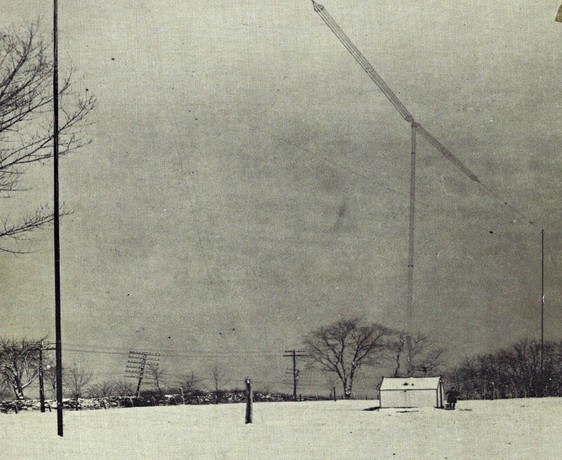
The 1BCG station in Greenwich (CT-USA)
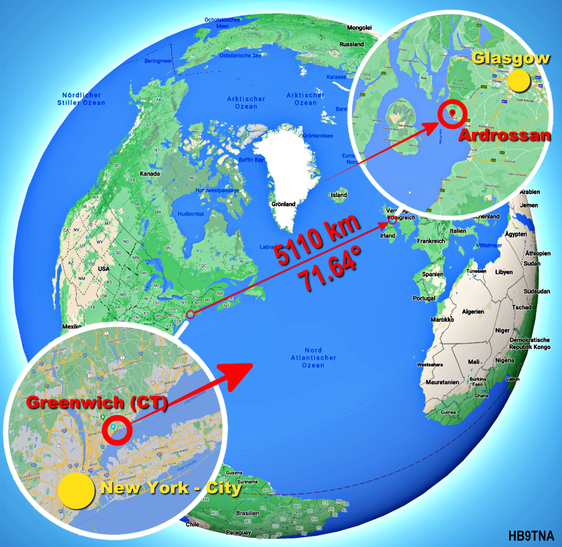
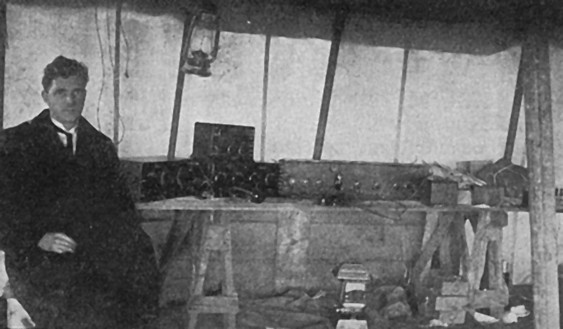
The receiving station in Ardrossan Pearson
Credit for the pictures: ARRL and HB9TNA
